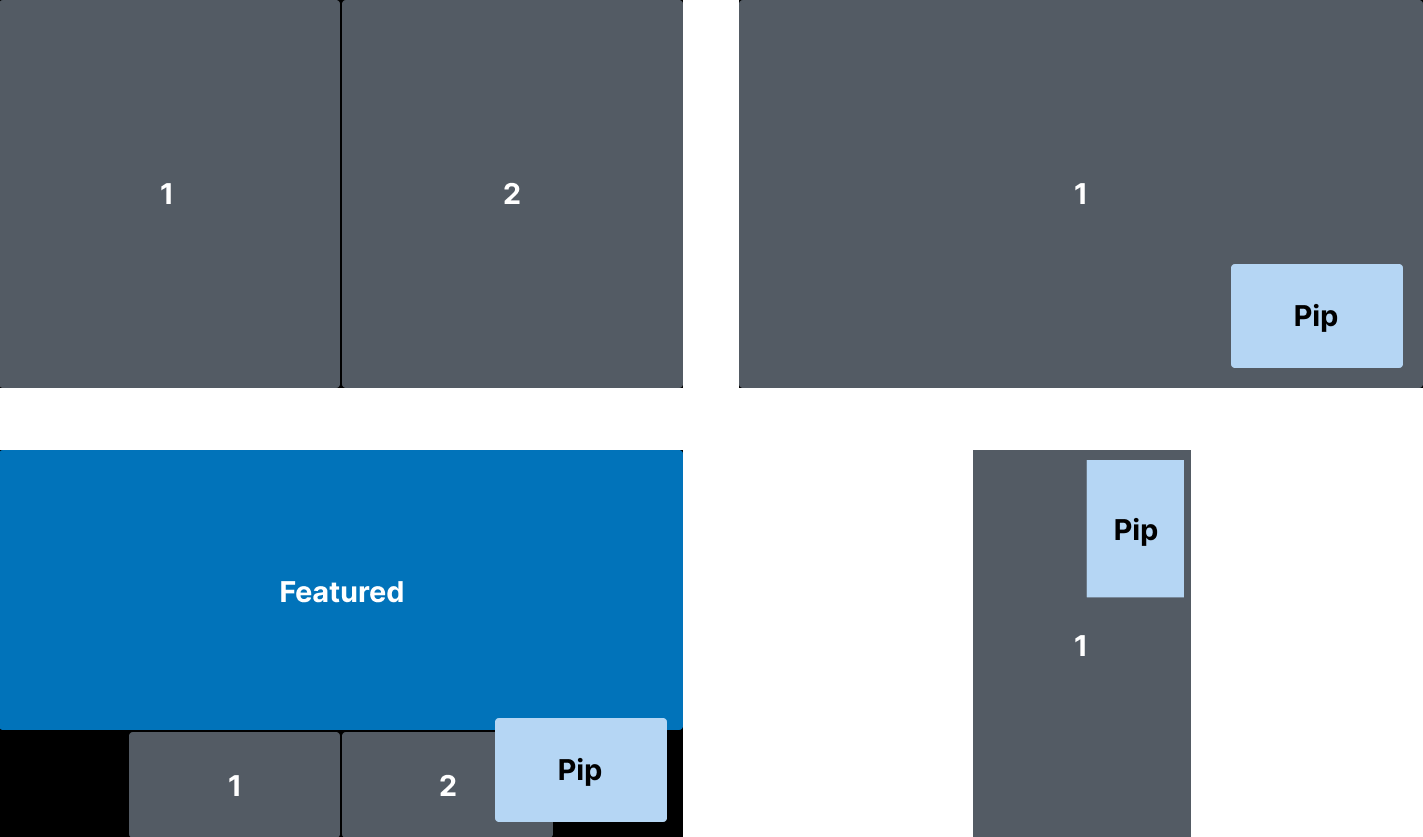Overview of IVS Server-Side Composition
This diagram illustrates how server-side composition works:

Benefits
Compared to client-side composition, server-side composition has the following benefits:
-
Reduced client load — With server-side composition, the burden of processing and combining audio and video sources is shifted from individual client devices to the server itself. Server-side composition eliminates the need for client devices to use their CPU and network resources for compositing the view and transmitting it to IVS. This means viewers can watch the broadcast without their devices having to handle resource-intensive tasks, which can lead to improved battery life and smoother viewing experiences.
-
Consistent quality — Server-side composition allows for precise control over the quality, resolution, and bitrate of the final stream. This ensures a consistent viewing experience for all viewers, regardless of their individual devices' capabilities.
-
Resilience — By centralizing the composition process on the server, the broadcast becomes more robust. Even if a publisher device experiences technical limitations or fluctuations, the server can adapt and provide a smoother stream to all audience members.
-
Bandwidth efficiency — Since the server handles the composition, stage publishers do not have to spend extra bandwidth broadcasting the video to IVS.
Alternatively, to broadcast a stage to an IVS channel, you can do the composition client side; see Enabling Multiple Hosts on an IVS Stream in the IVS Low-Latency Streaming User Guide.
Composition Lifecycle
Use the diagram below to understand the state transitions of a composition:

At a high level, the life cycle of a Composition is as follows:
-
A Composition resource is created when the user calls the StartComposition operation.
-
Once IVS successfully starts the Composition, an “IVS Composition State Change (Session Start)” EventBridge event is sent. See Using EventBridge with IVS Real-Time Streaming for details about events.
-
Once a Composition is in an active state, the following can happen:
-
User stops the Composition — If the StopComposition operation is called, IVS initiates a graceful shutdown of the Composition, sending "Destination End" events followed by a "Session End" event.
-
Composition performs auto-shutdown — If the IVS stage is deleted or no participant is actively publishing to the IVS stage for 60 seconds, the Composition is finalized automatically and EventBridge events are sent.
-
Destination failure — If a destination unexpectedly fails (e.g., the IVS channel gets deleted), the destination transitions to the
RECONNECTINGstate and a “Destination Reconnecting” event is sent. If recovery is impossible, IVS transitions the destination to theFAILEDstate and a “Destination Failure” event is sent. IVS keeps the composition alive if at least one of its destinations is active.
-
-
Once the composition is in the
STOPPEDorFAILEDstate, it is automatically cleaned up after five minutes. (Then it no longer is retrieved by ListCompositions or GetComposition.)
IVS API
Server-side composition uses these key API elements:
-
An EncoderConfiguration object allows you to customize the format of the video to be generated (height, width, bitrate, and other streaming parameters). You can reuse an EncoderConfiguration every time you call the StartComposition operation.
-
Composition operations track the video composition and output to an IVS channel.
-
StorageConfiguration tracks the S3 bucket where compositions are recorded.
To use server-side composition, you need to create an EncoderConfiguration and attach it when calling the StartComposition operation. In this example, the SquareVideo EncoderConfiguration is used in two Compositions:

For complete information, see IVS Real-Time Streaming API Reference.
Layouts
The StartComposition operation offers two layout options: grid and pip (Picture-in-Picture).
Grid Layout
The grid layout arranges stage participants in a grid of equally sized slots. It provides several customizable properties:
videoAspectRatiosets the participant display mode to control the aspect ratio of video tiles.videoFillModedefines how video content fits within the participant tile.gridGapspecifies the spacing between participant tiles in pixels.omitStoppedVideoallows excluding stopped video streams from the composition.featuredParticipantAttributeidentifies the featured slot. When this is set, the featured participant is displayed in a larger slot on the main screen, with other participants shown below it.participantOrderAttributeenables custom participant ordering based on attribute values in participant tokens. When specified, participants are ordered numerically by their attribute values, with participants lacking the attribute falling back to arrival-time ordering. This provides optional deterministic positioning and allows for role-based layouts.
For details on grid layout (including valid values and defaults for all fields), see the GridConfiguration data type.

Picture-in-Picture (PiP) Layout
The PiP layout enables displaying a participant in an overlay window with configurable size, position, and behavior. Key properties include:
pipParticipantAttributespecifies the participant for the PiP window.pipPositiondetermines the corner position of the PiP window.pipWidthandpipHeightconfigure the width and height of the PiP window.pipOffsetsets the offset position of the PiP window in pixels from the closest edges.pipBehaviordefines PiP behavior when all other participants have left.
Like the grid layout, the PiP layout supports featuredParticipantAttribute, omitStoppedVideo, videoFillMode, gridGap, and participantOrderAttribute to further customize the composition. The participantOrderAttribute enables custom participant ordering for both selecting the participant for the PiP window and positioning grid participants based on attribute values in participant tokens.
For details on PiP layout (including valid values and defaults for all fields), see the PipConfiguration data type.

Note: The maximum resolution supported by a stage publisher on server-side composition is 1080p. If a publisher sends video higher than 1080p, the publisher will be rendered as an audio-only participant.
Important: Ensure your application does not depend on the specific features of the current layout, such as size and position of tiles. Visual improvements to layouts can be introduced at any time.